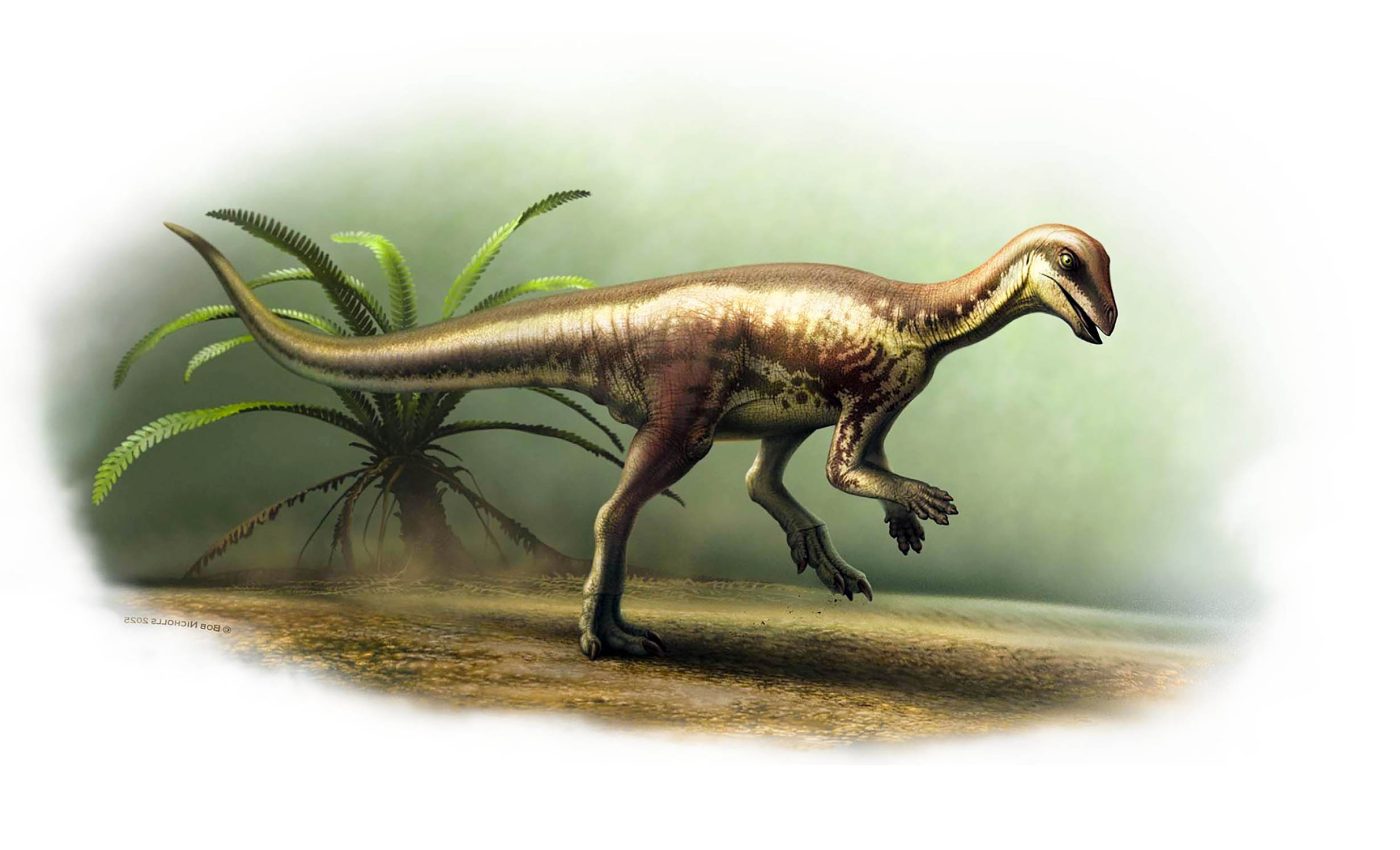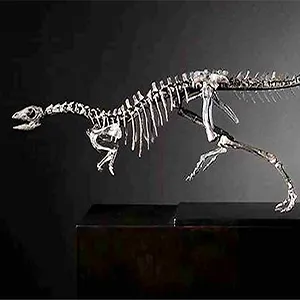
Cat-sized 'running dinosaur' discovered in Colorado remains a mystery to scientists
A fleet-footed dinosaur, just about three feet long, has joined the fossil roster from Colorado as a new species named Enigmacursor mollyborthwickae. It now stands on display in London’s Natural History Museum.
Researchers say the specimen helps clear up a long-standing mix-up among small plant-eating dinosaurs from the American West.
Reading Enigmacursor bones
In a new study, the team places Enigmacursor among the neornithischians, early bird-hipped plant eaters, a group of small, two-legged herbivores that often fell through the cracks of earlier research.
Lead researcher Prof. Susannah Maidment from the Natural History Museum (NHM) in London, who led the analysis and public display of the fossil.
The legs carry the story. Proportions of the femur and shin, plus ankle details, point to a quick runner, which is captured in the name, cursor meaning runner, and the genus meaning enigmatic runner.
The skeleton also looks young. Many neural arches are not fully joined, which is a sign the animal had some growing left to do.
Untangling a taxonomic knot
For more than a century, tiny Morrison Formation plant eaters were often lumped into catch-all labels, especially Nanosaurus.
A 2025 review by Barrett and Maidment concluded those historic names are nomena dubia, meaning names based on specimens too incomplete to diagnose reliably.
Enigmacursor offers a stable anchor because it is a well documented holotype, the single reference specimen that permanently fixes the species name, with arms, legs, hips, and spine preserved from one individual. That gives scientists a clear yardstick for future comparisons.
When the team scored its features, Enigmacursor came out close to Yandusaurus from Jurassic China, not as a later duck-billed relative.
The specimen shows one clear autapomorphy and a distinctive mix of leg traits that separate it from look-alike small dinosaurs.
Life on Jurassic floodplains
The Morrison Formation, a Late Jurassic rock unit that stretches across the western United States and records rivers and floodplains, preserved famous giants and their neighbors, including small runners like Enigmacursor.
See the National Park Service overview for context, where the formation is introduced with its habitats and well known species.
Life would not have been easy for a knee-high herbivore living around sauropods and big predators. Speed and alertness were likely its best defenses in a landscape full of heavy feet and sharp teeth.
The fossil’s recent path is unusual too. It was collected on private land in Colorado in 2021 to 2022, later purchased by the museum, and then scanned so researchers worldwide can study digital models.
The team reports 3D surface scans that make the specimen broadly accessible.
Why Enigmacursor matters
Small dinosaurs rarely get center stage. Their bones break more easily, their skeletons can be missed in the field, and collectors have long favored larger showpieces, which all stack the deck against finding them.
“Smaller dinosaurs are often left behind, meaning there are probably many still in the ground,” said Prof. Susannah Maidment from the Natural History Museum, London.
The cleaned-up taxonomy matters for more than labels. Ecology and evolution studies depend on who is present, how many species there are, and what they were doing, and that counts only when names are secure.
The work also stabilizes Yandusaurus on the dinosaur family tree and strengthens the case that the Morrison’s small herbivores were more diverse than the historical record suggested.
That opens the door for museum drawers, old quarry notes, and new fieldwork to reveal more small runners.

Bringing fossils into the digital age
To make sure Enigmacursor’s story doesn’t stop at its display case, researchers created detailed 3D scans, allowing scientists worldwide to study the fossil without risking damage to the original bones.
These digital replicas capture surface details at a scale finer than a millimeter, preserving clues about muscle attachment, bone texture, and growth patterns.
As open datasets, they invite collaboration from specialists studying movement, anatomy, and evolution.
Digitization is changing how paleontology operates. Instead of fossils being limited to a few museum basements, high-resolution scans and shared databases now form a virtual library of life.
This accessibility helps identify new species faster, verifies old ones, and keeps rare finds like Enigmacursor available for new generations of researchers to explore.
Rewriting the story of small herbivores
For decades, the picture of the Jurassic ecosystem has been skewed toward the giants.
Yet, animals like Enigmacursor show that small, fast herbivores likely played vital ecological roles, grazing on low plants, dispersing seeds, and serving as prey for mid-sized predators.
Their presence would have shaped food webs just as much as the massive sauropods that dominated the headlines.
Paleontologists now see the Morrison Formation as a more dynamic environment, not just a stage for giants but a living system full of movement and diversity.
Enigmacursor bridges that gap in understanding, giving researchers a glimpse of how evolutionary experiments in agility, speed, and small-body survival were already underway 150 million years ago.
The study is published in Royal Society Open Science.
—–
Like what you read? Subscribe to our newsletter for engaging articles, exclusive content, and the latest updates.
Check us out on EarthSnap, a free app brought to you by Eric Ralls and Earth.com.
—–













